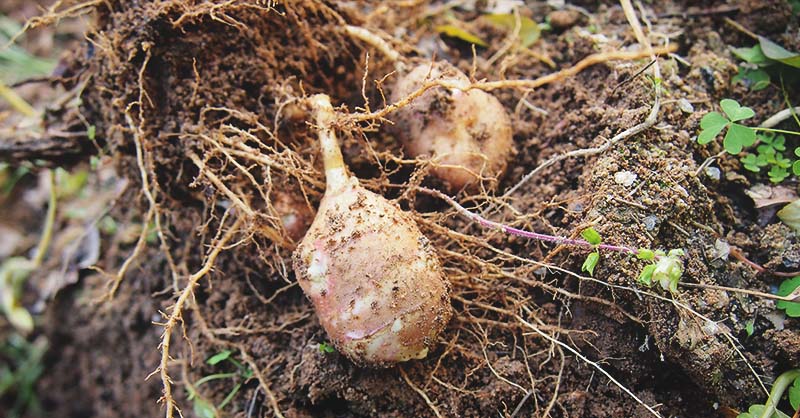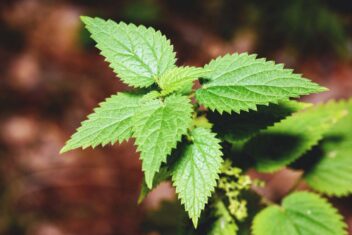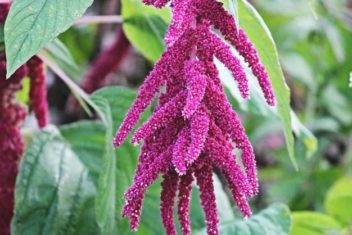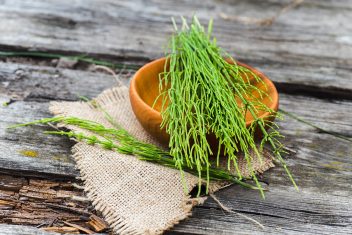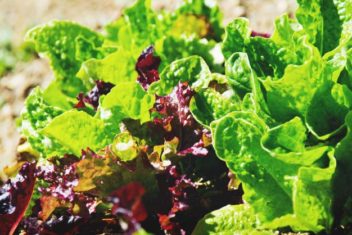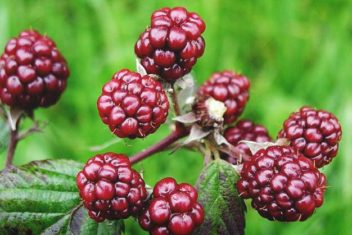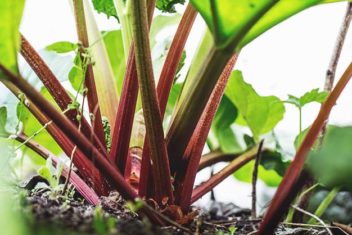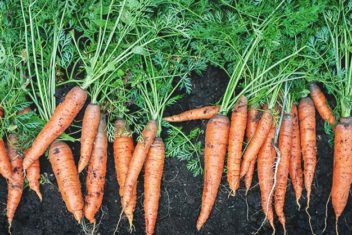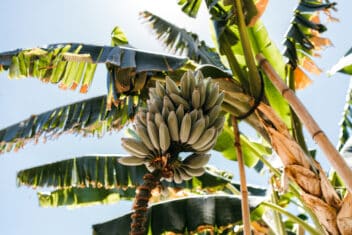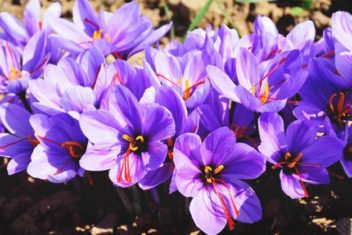I first tried Jerusalem artichokes about a decade ago (oh geez, I feel old saying that). I received a paper bag full of them in a CSA basket, and I remember wondering, “what the heck are these weird little knobby things?” Was I supposed to eat them?
A quick look at the CSA basket explainer e-mail told me that these irregular roots are called “sunchokes,” which is another name for Jerusalem artichokes. It turns out, I could prepare them much like any other root vegetable.
Without a second thought, I sliced them up and roasted them – one of my favorite potato preparations – and we feasted on them at dinner. The delicious new side dish was a revelation. Potato-ey, but with a satisfying nutty flavor.
Little did I know that I was in for a rude awakening later on. At the table, I declared sunchokes to be my new favorite vegetable, and ten years later, they’re still on the top of my list. Sadly, I eat them infrequently. Mostly because I can’t find them at the supermarket, but also for another important reason…
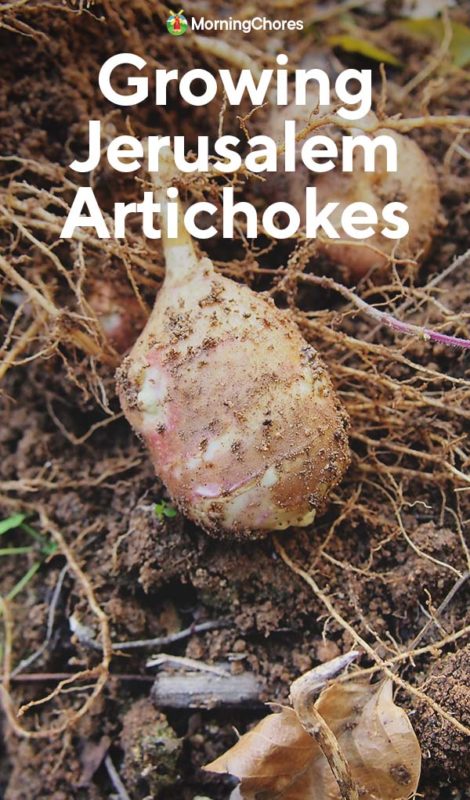
A Word of Caution
Jerusalem artichokes contain a carbohydrate called inulin (not to be mistaken for insulin) which is hard for the human gut to digest. Eat a bunch of sunchokes, and you’ll be in for a rumbly ride. Make sure you’re near a bathroom.
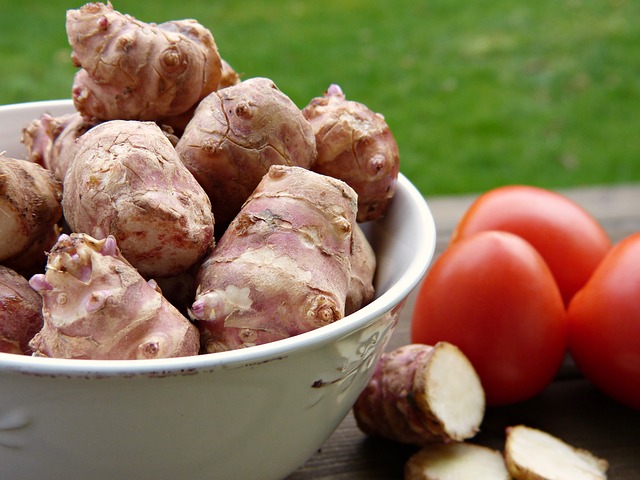
The starchy tubers can cause bloating, gas, and diarrhea. But you know they’re tasty because, despite all this, I continue to enjoy them once in a while.
Cooking and peeling the chokes helps reduce the effects of inulin, but it won’t curb them completely.
The moral of the story? Enjoy these plants, but plant them with caution!
Jerusalem Artichoke Varieties
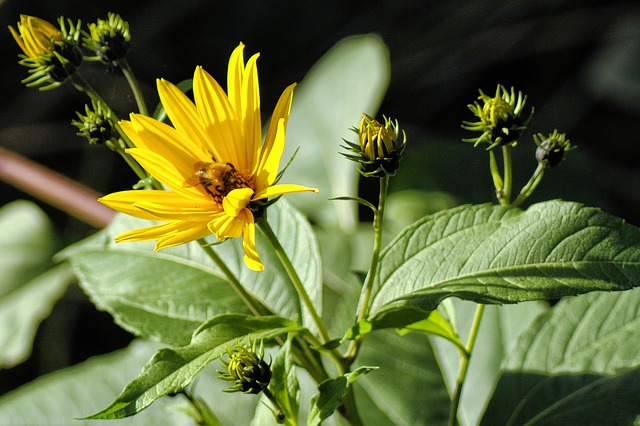
The tubers are native to the Americas, so all varieties grow exceptionally well here. They’re perennial, too, so if you leave a tuber behind while harvesting, you’ll find yourself gifted with a second-year crop of Jerusalem artichokes. The plants produce edible roots and pretty sunflower-like blooms, which isn’t surprising given that sunchokes are related to the sunflower.
There are two main types of Jerusalem artichokes; red-skinned and light-skinned, though most have white flesh. Some varieties are knobblier than others while others are smoother and easier to peel. Here are a few notable sunchokes varieties:
- Clearwater: Maine-sourced heirloom with white skin and flesh.
- Passamaquoddy: Purple-skinned tubers.
- Skorospelka: Reddish skin with white flesh. Superior yield, highly productive.
- Stampede: A common yellow-skinned variety. Delicious tasting.
- White Fuseau: White-skinned
- Red Fuseau: Red-skinned varietal.
- French Mammoth White: Knobbier variety.
- Dwarf Sunray: Shorter stems.
Planting Jerusalem Artichokes
The trouble with growing Jerusalem artichokes is that they’re pesky plants that have the potential to become invasive. The trick is to pick the right location for these vigorous tubers. A raised bed is a smart choice.
A friend of mine moved into a new place and asked me about the weird rhizome spreading in her yard. I realized that she had a sunchokes crop on her hands. You could eat them, I exclaimed with excitement, but she was still irritated that they were everywhere and had taken up the whole garden plot, so beware.
That said, if you want a low maintenance crop that also provides a decent yield, sunchokes are your guy. Most vegetable crops are fairly high-maintenance, in my experience, but sunchokes are a laissez-faire plant.
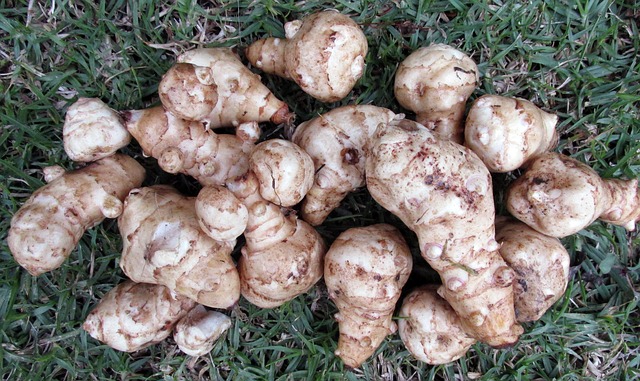
Here’s what you need to know when planting your first crop of Jerusalem artichokes.
Soil Requirements
Sunchokes are tolerant of poor soil, so feel free to plant somewhere in your garden where other plants have trouble thriving. Sunchokes won’t balk at healthy soil, of course, so there’s no need to choose an infertile area purposely, but it’s helpful to know that the plants aren’t particularly fussy.
Plant in an area with alkaline soil since sunchokes prefer a pH between 5.8-6.2. Avoid waterlogged soil, since too much moisture is about the only thing that will kill your Jerusalem artichokes.
Sun Requirements
Jerusalem artichokes grow in zones 3-9. They need full sun to do well.
Starting
Growing Jerusalem artichokes is a little bit like growing potatoes. They’re not started from seed but a tuber. It’s vital that you purchase seed chokes from a reputable supplier. If you’re in Canada, I recommend Hope Seeds or West Coast Seeds for your tuber needs. Your tubers will then be shipped out at the right time for your area.
Germination of tubers happens about a week to over two weeks after planting. Plants will germinate best in soil temperatures that are at least 50°F.
Planting
Plant tubers in the early spring. Plant in-ground or in containers or fabric pots. You don’t need to hill sunchokes like you do potatoes, but mounding around the base of the plant can help prevent the tall stems from getting knocked over by the wind.
Spacing
Space plants 12-inches apart and dig about 4-inches deep (minimum).
Trimming and Staking
If you plan to keep the flowers around, stake the plants to support them. Otherwise, trim the tops of the sunchokes to keep the tall stems from blowing around and falling over in the wind.
Containing
It’s highly recommended that you pick a permanent planting spot or bed for your Jerusalem artichoke crop since tubers left in the ground will grow the following year. The tubers are notoriously challenging to get rid of. At harvest time, try to dig up as many tubers as you can to prevent overcrowding in subsequent years and so that you can plant only the best seed tubers.
Caring for your Jerusalem Artichokes
The plants are low maintenance, so once they’re established and growing, there’s not much for you to do other than perhaps cutting the stems back.
Watering
Water regularly during dry spells, but don’t leave pools of water around your plants. Jerusalem artichokes don’t need to be soaked.
Weeding
Weed as needed to help control fungal disease. That said, sunchokes are sometimes considered a weed themselves, so you don’t have to be as diligent as you do with some other plants.
Mulching
As with other plants, mulch helps keep the soil moist and keeps down weeds.
Fertilizing
Fertilizing isn’t necessary, but your plants will thank you if you give them a heaping helping of compost when planting.
Pruning
The tall plants benefit from some pruning to prevent stalks from falling or breaking in heavy winds. Pruning also helps create bushier plants. Cutting the stems re-routes energy to bulb formation instead of bloom formation. You may want to keep a few flowers around, however, to satisfy hungry pollinators.
Overall, Jerusalem artichokes are low maintenance plants, so they’re perfect for the lazy gardener or for gardeners who’ve had trouble with other plants in the past and want something productive for their plot.
Problems and Solutions to Growing Jerusalem Artichokes
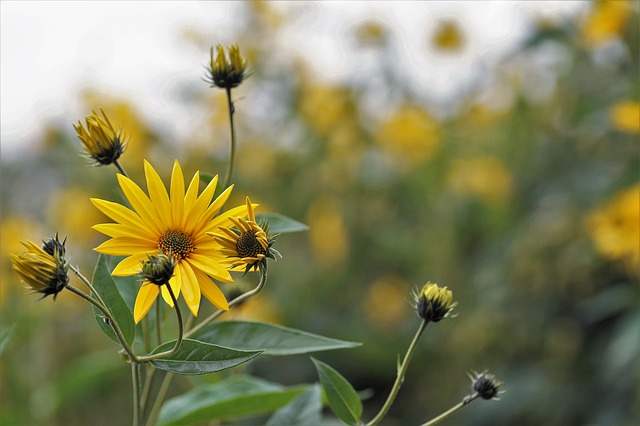
Remember when I said that Jerusalem artichokes are low maintenance? They’re also relatively problem-free. They don’t typically succumb to many diseases save for a few rare cases of fungal diseases like sclerotinia, which is a white mold that can kill off plants and reduce your overall yield.
Pests aren’t usually a problem for growing Jerusalem artichokes. Slugs and snails may find their way to your plants. You may also run into aphids.
The biggest problem that may occur with Jerusalem artichokes is that they can become invasive. The key is proper planning. Don’t plant the tubers just anywhere in your garden. Pick a spot that’s contained and where you won’t mind them coming back each year. Avoid planting next to cherished plants that may be overtaken by the sunchokes.
Think carefully before you decide to plant Jerusalem artichokes. Provide them a space to grow, and you’ll get to harvest gourmet tubers, but be aware that they’re hard to control.
Companion Planting for Jerusalem Artichokes
There are a few benefits to growing Jerusalem artichokes in your garden. The tall flowering plants provide shade, act as a windbreak, and attract pollinators.
Best Companions
Plant greens next to or near sunchokes to keep the hot sun from causing premature bolting. Grabby plants like climbing beans may also benefit from having sunchokes nearly to climb. Try growing the following plants with your Jerusalem artichokes:
- Cucumbers
- Lettuce
- Spinach
- Arugula
- Pole and runner beans
- Corn
- Sunflower
- Coneflower
- Chicory
- Mint
- Chamomile
- Peanut
- Rhubarb
Worst Companions
- Potatoes
- Tomatoes
Harvesting and Storing Jerusalem Artichokes
Plants are ready for harvest in about 130 days, which is usually in the late fall or early winter. Like potatoes, the plants die back once they’re ready to be harvested. Jerusalem artichokes die back much later than potatoes.
Tubers keep in the fridge for about a week, but otherwise, keep plants in the ground and harvest as needed to prevent spoilage in storage. Keep in a moist container to prevent premature spoilage. A brown paper bag works great.
When preparing sunchokes, peel the skin to prevent gastrointestinal distress. Cooking also helps break down the hard to digest carbs and reduces instances of gas and bloating.
What are some of your favorite sunchoke recipes? Do you eat them frequently, or are you an occasional sunchoke eater due to gastrointestinal issues? Let us know in the comments section!
